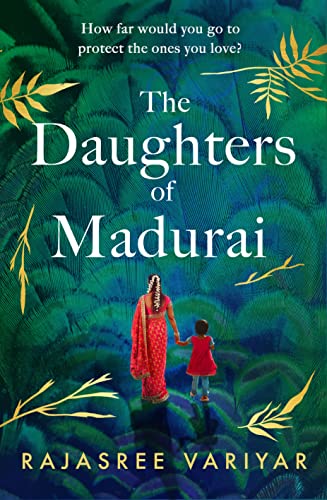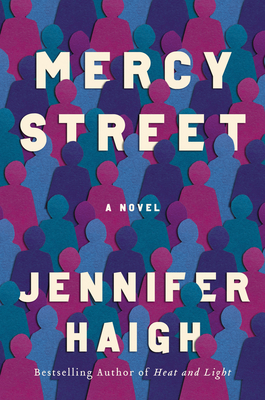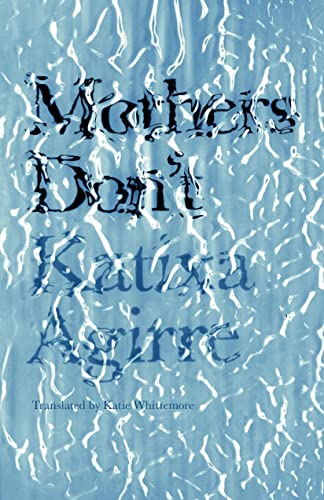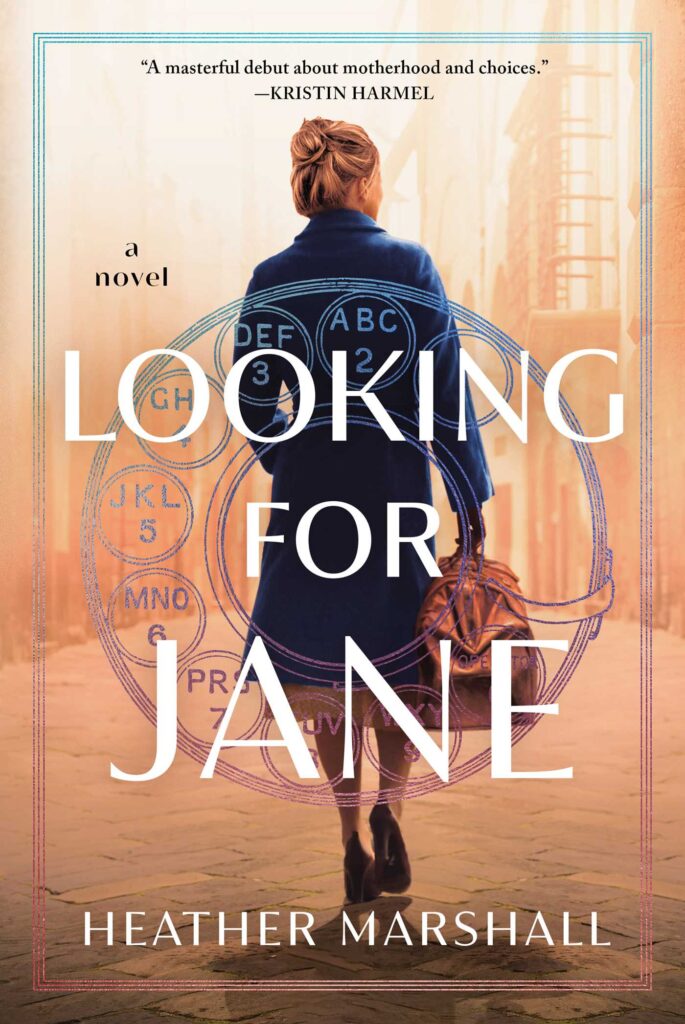Image credit: Goodreads.com
Following the template of “girls gone wrong”, Jennifer Haigh has written a wonderful depiction of abortion zealots gone wrong, a novel which should encourage readers to continue to rejoice in their ordinary, heterosexually (re)productive, and pro-life lives.
Granted, that may not have been the intention of the author (trying to illustrate the “benefits” of abortion, I guess), but the characters are so hopeless, purposeless, and downright STOOPID that anybody reading the novel would feel much happier knowing that his or her life AIN’T so bad after all.
Moreover, Haigh’s novel comes close to being a fictional support for the pro-life movement, as I argue below, applying the questions of right-to-life literary theory to the work, primarily because the characters’ world is so devoid of purpose that they function as contrasts to the anti-life mentality of the abortion business which is supposed to be the framework for the novel.
For, an abortion clinic is, after all, still a place where women are harmed, where unborn babies are killed, and where fathers are alienated. The negative connotation of any abortion clinic obtains despite five decades of feminist rhetoric and blabber about women’s “choice”, “empowerment”, “liberation”, and other euphemisms for the brutality expressed in the first sentence of this paragraph.
Let’s examine the novel vis-à-vis the questions of right-to-life literary theory, shall we?
1. Does the literary work support the perspective that human life is, in the philosophical sense, a good, some “thing” which is priceless?
Unfortunately, Haigh’s characters cannot apply any higher philosophical value to life beyond their immediate physical or political needs. For example, middle-aged Timmy, a key character who interacts with the main character, lives solely for his addiction: daily mounds of marijuana. (Two annual trips to Florida constitute the paternal attention he gives to his teenaged son, now raised by his ex-wife.) Forty-three year old Claudia, the main character, thinks her job as a counselor/marketer for the abortion clinic is her summum bonum: “For Claudia, dealing with unplanned pregnancies—prevention, remediation—was more than a career. It was her mission, her life’s work” (257).
Pro-life activists who protest outside abortion companies/clinics can use Claudia’s stress as evidence that abortion businesses are demeaning and frightful. For example, she affirms in close proximity quotes that “Work has been stressful lately” and “I mean, it’s always stressful” (36). The pro-life reader can sympathize with this pro-abortion character’s stress; much later in the novel, Claudia describes how a “real” abortion clinic operates (she is trying to denigrate a crisis pregnancy center): “The place had no metal detector, no cameras, not even a security guard. At a real clinic, such measures would be automatic. At a real clinic, the staff would be afraid” (204).
It is no wonder, then, that, when her mother asks her indirectly why she works at an abortion clinic (“I don’t know how you can work there”), Claudia does not reply verbally, but responds nevertheless: “The person who says it—even if she’s your mother—is trying to start a conversation you don’t want to have” (255).
How horrible and terribly vapid that smelling like burnt weeds and holding a job which involves harming women, killing unborn babies, and alienating fathers—and not wanting to talk about it—are the existential goods that these characters cite to guide them through their years on the planet.
2. Does the literary work respect the individual as a being with inherent rights, the paramount one being the right to life?
The Nazi-like disgust that the novel’s pro-abortion characters have for humanity is striking. Claudia is especially a hot mess in this regard. Her view of children counters that of the rest of humanity; she “didn’t love children—at least, not in the global, unconditional way women were supposed to” (22). Her view towards people in general is derived from a purely economic misinterpretation of her mother’s work in a nursing home. Her mother “raised other people’s kids because it was one of only a few things she could earn money doing. The world was full of discarded people, sickly old ones and damaged young ones, and she was a paid caretaker” (17-8).
Used tissues should be “discarded”, but that adjective should never be used for fellow human beings—unless one adopts the Nazi (and pro-abortion) philosophy that there is such a thing as a life not worthy of life.
3. If the literary work covers the actions of a family, does it do so respecting heterosexual normativity and the integrity of the family?
LGBTQ and abortion activists (virtually the same political identity group, of course) will not like how Haigh’s characters support heterosexual normativity despite their best efforts to live according to secular principles regarding sex and families.
Claudia’s need for heterosexual normativity would be pathetic to LGBTQ and (especially) transgender zealots, but sympathetic to the pro-life world, as in a touching scene where the teenaged Claudia works at a car shop: “She sat in the back like a daughter on television. A cherished daughter being driven somewhere, her mother in the passenger seat, her father at the wheel” (45). Saccharine, maybe, but the comparison demonstrates how desperately Claudia wanted ordinary family life.
Claudia’s desire for heterosexual normativity in a traditional family structure continues. She states that “she didn’t want to know” whether her mother would have aborted her if abortion were legal in Maine (she was conceived in May 1971), yet the narrator says that Naomi, a fellow abortion clinic worker, “was the mother Claudia wished she’d had” (47, 84).
Even Timmy, the marijuana dealer, thought that marrying the mother of his unborn baby “seemed like the right thing to do” even though they barely knew each other (164).
By novel’s end, however, heterosexual normativity reigns supreme, a denouement which begs the question: why, therefore, was it necessary to include an abortion business in the plot? Was it just a means to end the novel “happy” since there is nothing happy about an abortion? Or was it the author’s/narrator’s genuine effort, in Marxist literary critical fashion, to overthrow the ideology of anti-life feminist matriarchy with heterosexuality which has been a feature of humanity since we oozed out of the slime?
Whatever the answer is, it is delightful to know that the neurotic, super-pious, living-out-of-his-mother’s-basement, pro-life protestor Anthony now has a job at a deli, and, when he comes across the woman whom he first screwed, the reader perceives that they will most likely go on a date (here’s where the audience goes “Aw…”).
Even Claudia is overcoming the oppression of feminist pro-abortion ideology by choosing life. Although she is still working at the abortion clinic (think cognitive dissonance), she is obviously pregnant and declaims the following secular version of a pro-life affirmation of motherhood:
Finding herself accidentally pregnant in middle age was the second-greatest surprise of her life.
The greater surprise was that she could do it. (328)
On the last page of the novel, Claudia expands her pro-life declamation with the following:
Soon, soon, she would give birth to her mother. In the dream she had found this ridiculous, but also correct and delightful.
It was the best possible thing. (338)
4. Does the literary work comport with the view that unborn, newborn, and mature human life has an inherent right to exist?
Like contemporary abortion novels written by openly anti-civil rights authors, Haigh’s novel does not recognize the first civil right, the right to life of the unborn child. The pro-abortion characters express their hatred of the unborn child to be killed in abortion with the usual contempt, sometimes in new anti-life phrases which further distort his or her humanity.
For example, Claudia defines her miscarried child, a baby lost at eight weeks, whom she did not want, as
a fetus the size of a gumball.
It wasn’t a baby; it was a menstrual period. (97)
Note that the negation, the rhetorical use of “not”, followed by definition, is reinforced by being its own paragraph, as though the narrator/author wanted to emphasize the dehumanization of the unborn child.
Claudia continues her rant about the fetus not being a person later in a series of adjectives, showing how ignorant she is of fetologists’ research into the activities of the unborn human being: “this mute, unthinking knot of tissue—alive, yes, but unformed, unconscious, incapable of tenderness or reasoning or even laughter” (130-1).
Even a hallmark of women’s reproductive capacity, pregnancy, is denigrated by these anti-life characters. While life-affirming (pro-life) women regard pregnancy as a joyous possibility of being female, Claudia, in contrast, compares pregnancy to a burning building with a fire on each floor (14).
Just like other pro-abortion novels, even ones written by activists who support abortion businesses like Planned Parenthood, if recognizing the first civil right to life is impossible for these pro-abortion characters, one would think that saying the word “abortion” would not be, but it is. Instead of saying the word “abortion”, clinic employees use an acronym to hide the name of the killing they perform: “An AB. That’s what they called it. Whenever possible, they avoided saying the word” (26).
The narrator, seemingly recording Claudia’s reflections on an aborting mother’s experience, uses multiple euphemisms for the killing about to occur:
In an hour the procedure would be over, and Hannah’s visit to the clinic would become part of her past. When she thought about it at all, she’d remember a youthful mistake, quickly corrected. In the spring she would graduate from Pilgrims Country Day. Whatever happened next—Yale or Dartmouth, the future unfolding—would stem directly from the choice made on Mercy Street. For Hannah R., every door remained open. Her life was entirely her own. (178)
While the words “choice”, “it”, and procedure” have a long history in anti-life writing to refer to abortion, this novel offers some unique and verbose euphemisms which the pro-life world should note as linguistic attempts to hide the brutality of abortion. A “visit to the [abortion] clinic” is not like visiting Grandma for her homemade ricotta cookies. “Youthful mistake” (that is, killing an unborn child in an abortion) is not like the youthful indiscretion of dancing to a disco song on your car hood while slightly inebriated. While using white-out to erase a digit error in one’s checking account register may be something which needs to be “corrected”, an abortion corrects nothing because becoming pregnant and safeguarding human life in the womb are not errors.
Another distortion pro-abortion characters use to hide the always-negative connotation of “abortion” involves layers of ambiguous linguistic camouflage for teenagers who get a judicial bypass abortion. The author compares it to “permission to do as she wished with her one and only life” (28). “Permission”? “As she wished”? “Her one and only life”? These phrases require an extensive unpacking which would make this review more lugubrious than it already is.
Moreover, any educated reader must note how pro-abortion characters lack or ignore the science on which the pro-life movement is based. This is evident, for example, when Claudia imagines herself in a video countering what a pro-life protester says about abortion and breast cancer: “Just so you know, there is no connection at all between abortion and breast cancer” (98; italics in original). That the author/narrator felt compelled to emphasize this falsity in italics heightens either the zealotry or the willful ignorance of the pro-abortion main character.
5. When they are faced with their mortality, do the characters come to a realization that there is a divine presence in the world which justifies a life-affirming perspective?
Finally, the characters in Haigh’s novel are just like every other abortion novel: if not openly irreligious, then they are simply ignorant. They’re dumb as dirt when it comes to the smallest particulars of faith, let alone the wider concerns of religion. For example, Claudia is terribly ignorant of a prayer which is common knowledge. “Hail Mary, full of grace. There was more to the prayer, but Claudia had never learned it. She understood the words only in football terms, the doomed audacity of the long-distance pass” (283; italics in original). To be fair, even the “pro-life” characters are irreligious. Victor Prine, the racist whom the narrator/author identifies as a pro-life protestor, thinks that people have faith because they are senseless: “The prison chaplain had caught him at a vulnerable moment. Later Victor would come to his senses, but at the time it felt real to him. He had wanted so badly to believe” (197).
Furthermore, Claudia “had no experience with religious people” (8-9). This lack of experience with people who have a radically different worldview from hers may account for her (or perhaps the author’s) ignorance throughout the novel. For example, Victor Prine is a pro-life activist, albeit one who is racist against African Americans, who engages in only one legitimate pro-life activity (distributing pro-life signs along his trucking routes) and one shady if not illegal activity (posting photos of mothers going into abortion clinics on his website). It’s interesting, therefore, that the author only focuses on pro-life protesters. She is apparently ignorant of other forms of pro-life activity: enacting protective legislation, composing pro-life songs, assisting mothers with untimely pregnancies by operating free crisis pregnancy centers (one such crisis pregnancy center discussed in the novel is dismissed as an entity which “existed for one reason only: to trick women out of getting abortions. The place was a fraud” [203]), or even writing pro-life book reviews of pro-abortion novels.
Makes you wonder if Haigh has any pro-life friends or if she is encased in the anti-life world of virulently pro-abortion New York editors and publishing houses.
But I digress.
There is one shining example of a crack in Claudia’s anti-life monolith, however. Claudia actually speaks kindly of a pro-life protestor named Puffy on one page (174) and then asks two questions about his pro-life witness later in the novel. Claudia “thought of Puffy, who showed up at the clinic each morning to do absolutely nothing. How could he stand it? What, exactly, kept him coming back?” ([229]-30). Answering these two questions could destroy her pro-abortion mindset.
While Haigh’s work need not be purchased, pro-life readers who would like to examine it in detail can always obtain a copy from their local libraries, thus saving their money for donations to pregnancy support groups.






